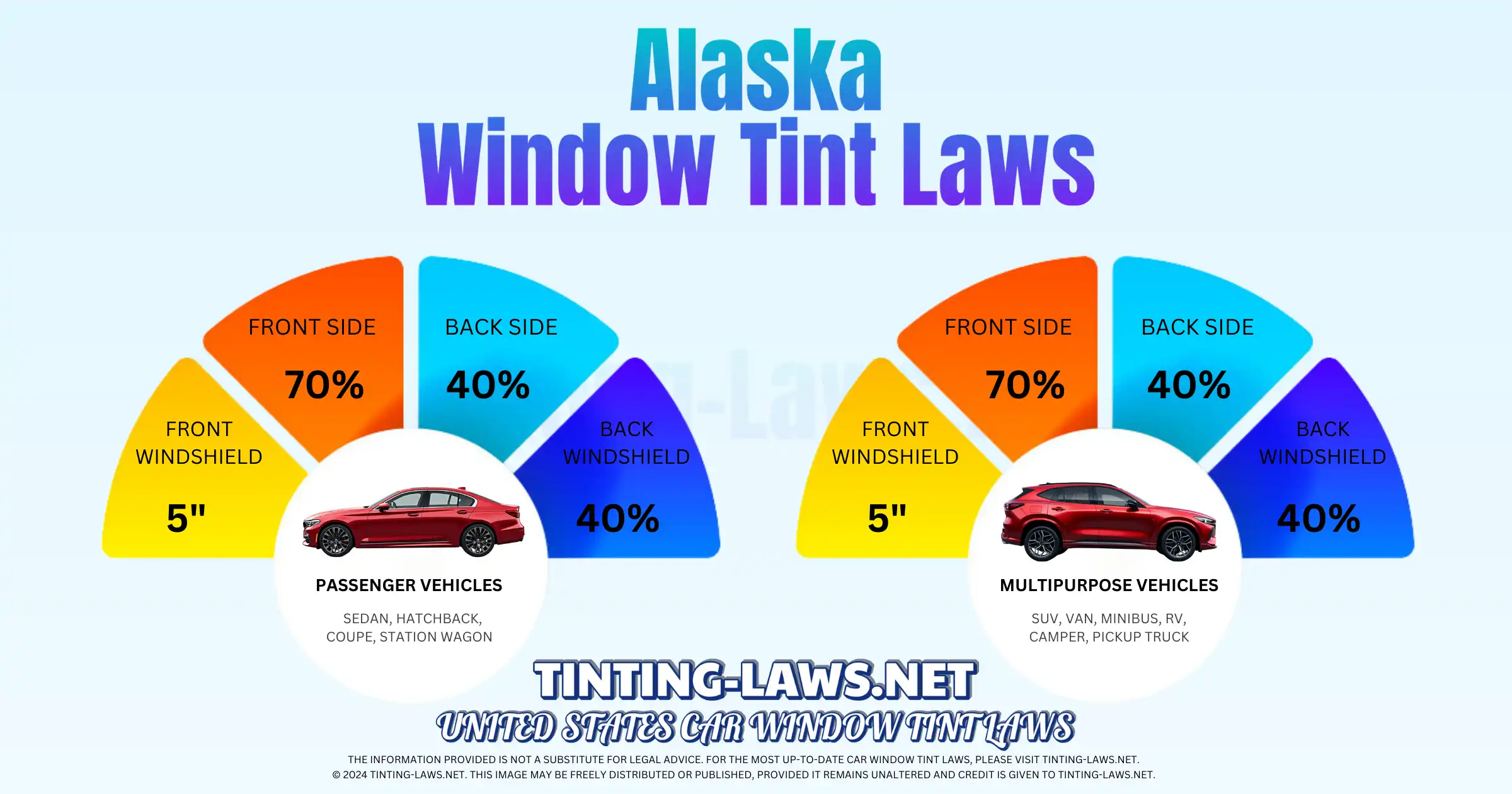Comprehensive Guide to Alaska Car Window Tinting Laws
Understanding the window tinting regulations in Alaska is essential to ensure compliance and avoid fines.
Enacted in 1994, Alaska’s car window tinting laws specify the permissible darkness and reflectiveness of window films for vehicles.
In this guide, you’ll find all the details about Alaska’s window tinting laws, including the rules for sedans, SUVs, and vans, along with additional regulations and tips.
Window Tint Darkness in Alaska
The amount of light that passes through your car windows is measured as VLT (Visible Light Transmission). Alaska’s VLT requirements differ based on vehicle type (sedans vs. SUVs/vans).
Tint Darkness Requirements for Sedans
- Windshield: Non-reflective tint is allowed on the top 5 inches.
- Front Side Windows: Must allow more than 70% of light to pass through.
- Back Side Windows: Must allow more than 40% of light in.
- Rear Window: Must allow more than 40% of light in.
Tint Darkness Requirements for SUVs and Vans
- Windshield: Non-reflective tint is allowed on the top 5 inches.
- Front Side Windows: Must allow more than 70% of light to pass through.
- Back Side Windows: Must allow more than 40% of light in.
- Rear Window: Must allow more than 40% of light in.

Window Tint Reflectiveness in Alaska
Reflective window tint helps reduce glare and heat but must comply with Alaska’s regulations.
Tint Reflectiveness for Sedans
- Front Side Windows: Must not have a metallic or mirrored appearance.
- Back Side Windows: Must not have a metallic or mirrored appearance.
Tint Reflectiveness for SUVs and Vans
- Front Side Windows: Must not have a metallic or mirrored appearance.
- Back Side Windows: Must not have a metallic or mirrored appearance.
Additional Alaska Window Tint Regulations
Alaska law includes several other rules that drivers need to follow:
- Side Mirrors: No restrictions.
- Restricted Colors: Green, gray, bronze, and neutral smoke window tint colors are permitted.
- Film Certification: Film manufacturers are not required to certify their films for sale in Alaska.
- Stickers: No sticker required to identify legal tinting.
- Medical Exemptions: Drivers or passengers who frequently travel in a vehicle in Alaska may qualify for medical exemptions. These exemptions must be renewed each year by a physician licensed in Alaska.
- Penalties: A penalty of up to $300, plus a $10 surcharge, applies if not corrected within the specified timeframe.
Tips for Compliance
- Alaska’s tinting laws may vary slightly by county. Always confirm with your local DMV or law enforcement agency to avoid misunderstandings.
- Ensure your window tint installation meets both the state requirements and manufacturer certifications.
By staying informed about Alaska’s window tinting regulations, you can enjoy enhanced comfort and privacy while adhering to the law.
For more details, consult local authorities or professional window tinting services.